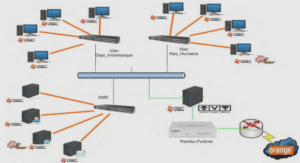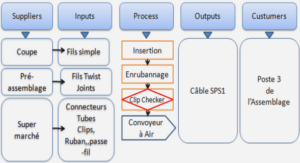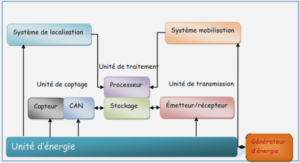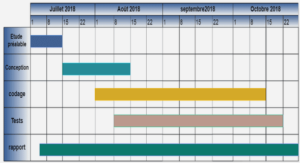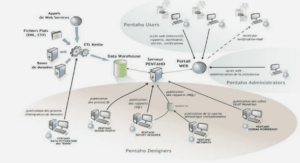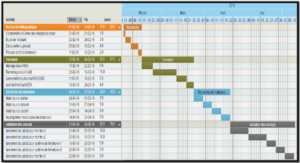What’s in the « biodiversity » name?
« Biodiversity » is a heavily used term in science and very popular with the general public (>48 million results on Google, March 2012). It is a shorthand form of « biological diversity » and it was defined as « the variability among living organisms fram ail sources including , inter a lia , terrestrial, marine and other aquatic ecosystems and the ecological complexes of which they are a part; this includes diversity within species and of ecosystems » (Convention on Biological Diversity, CBD, 1992) or, in simple words, « the variety of life ». Conventionally, three levels of biodiversity are recognized (genetic, species, ecosystems) but only one is usually investigated, namely the species level. Reasons for this trend probably include « ease of reach » of species diversity (e.g., observations in nature or experiments, relatively cheap to conduct) and the « ease of understanding » its more intuitive numbers (of species, of individuals etc.). Generally, geographic areas with many species are considered more interesting for conservation than species-poor areas. The species level is, however, more than an easy-to-grasp category due to its practical value: it is a check-list of extant species, a baseline against which to compare future changes towards biodiversity gain or, more likely, biodiversity loss. Ail biodiversity levels are interconnected and impacts on any level will trigger responses from the other biodiversity components. For example, genetic variation, considered to be related to population size (Frankham, 1996; but see Bazin, Glémin and Galtier, 2006), can act as a buffer against environmental changes (natural and anthropogenic), allowing the persistence of populations and species intime. Theory predicts correlations between genetic and species diversity that are either positive (due to environ mental heterogeneity and/or time since disturbance) or negative (species richness associated with reduced niche breadth per species, allowing fewer genotypes to coexist) (Lankau , 2011). Ecosystem functioning (e.g., pelagic ecosystem processes) is related to biodiversity in genes, species and functional groups (e.g. , richness of producers and consumers) (Duffy and Stachowicz, 2006). Experiments have shown that intraspecific genetic diversity of foundation species (i.e. , dominant primary producers) may influence the community structure (i.e., species richness and abundance at higher trophic levels), ecosystem processes and resistance to disturbance (Hughes and Stachowicz, 2004; Reusch et al., 2005 ; Crutsinger et al., 2006), although the spatial scale has to be considered as weil (Crutsinger, Cadotte and Sanders, 2009). Biodiversity and ecosystem functioning are directly connected to human wellbeing through ecosystem services, thus the need to protect biodiversity for the existence of the human society (Figure 1). Humans (Homo sapiens) should not be considered an external factor but an intrinsic part of biodiversity as we are one species among the -8.7 million estimated to exist (Mora et al., 2011 ). Human activities have large impacts on ailleveis of global diversity but they are also variable across cultures (although differences between cultures might decrease due to globalization). In this context, cultural diversity can be considered as an important factor in biodiversity sensu stricto, and even as another level of biodiversity rather than a research subject for a separate field (anthropology). As an index for this diversity, -7,000 languages are spoken worldwide (Davis, 2010), mostly by small groups of indigenous people with livelihoods directly depending on natural resources, thus involved in shaping local biodiversity and continuously evolving with their environ ment.
Marine biodiversity: a few characteristics
Marine biodiversity has long been underestimated due to the general belief that oceans are homogeneous with limited habitat diversity (compared to land), hence limited species diversity and infrequent speciation events. About 250,000 marine eukaryote species have been described (First Census of Marine Life, CoML, 2010). The estimated numbers range, however, from 500,000 (Gray, 1997) to over 10 million (Grassle and Maciolek, 1992) with recent estimates reaching 2.2 million species, which means that -90% of marine species are still to be discovered (Mora et al., 2011). At higher taxonomic levels, marine diversity is much higher than the terrestrial counterpart (35 marine phyla versus 11 terrestrial phyla) due to the fact that life appeared in the sea, and hence has had a longer time for evolutionary diversification (Gray, 1997). The differences in species numbers between land and sea are believed to be quite recent (-110 million years ago, MYA), coinciding with an increase in productivity on land , and explained by: i) higher primary productivity on land, on average (although marine kelp forests have higher productivity per surface unit); ii) narrower specialization of terrestrial species; iii) more effective barriers to dispersal on land ; iv) greater 3D complexity and niche availability on land; and v) greater viability of low-density populations (and consequently rare species) (Vermeij and Grosberg , 2010). Biodiversity has a heterogeneous distribution on the planet, with some areas being more diverse than others (Gaston, 2000). Some marine groups (e.g., bivalves) show a latitudinal diversity gradient with tropics as centers of origin and diversification and poles as species-poor areas (Gaston, 2000 and references therein; Valentine and Jablonski, 2010). The Arctic regions are less diverse compared to the Antarctic regions due to historical differences such as age and glacial history (Gray, 1997). Other patterns include an increase of species richness from shallow-waters to the deep-sea in soft sediments , higher diversity in the benthic compared to the pelagie realm, a diversity peak for coastal species in the western Pacifie and for oceanic groups at mid-latitudes (Gray , 1997; Tittensor et al., 2010). Both species and genes (within species) have a heterogeneous distribution in nature, thus the importance of geography for biodiversity. Species-rich and endemic species-rich areas are considered hotspots of biodiversity, in need of conservation. Likewise, genetically diverse or evolutionary distinct populations (evolutionary significant units, ESU) are hotspots of intraspecific diversity and should be considered as such in conservation plans (Crandall et al., 2000; Rauch and BarYam, 2004).
The economics of biodiversity
Humans are an intrinsic part of global biodiversity and our very existence depends heavily upon biodiversity preservation . We are living in a dynamic environment and we are witnessing a shift in our perception on biodiversity and its importance. Since the formai recognition of the term , biodiversity was considered important and worthy of conservation measures due to its role in supplying food , raw materials, biotechnological resources, ecosystem health and many other services (Table 1), although the overall value was difficult to grasp. In this context, a new approach focused on applying economic concepts to biodiversity valuation has been proposed and a synthesis on the global economic benefits of biodiversity and the costs of biodiversity loss has been published (TEEB, 2010). The overall goal of this emerging direction is to provide a link between science, policy ma king and business, th us a new vision for managing natural resources. Ecosystem « goods and services » (provisioning, regulating , cultural and supporting services; MA, 2005) have been valued at US$ 16-54 trillion per year (average of US$ 33 trillion/year) for the entire biosphere while the global gross domestic product was -US$ 18 trillion per year (Costanza et al. , 1997). The marine environ ment contributes -63% of the estimated value with most services coming from coastal systems (US$ 10.6 trillion/year). For instance, half a billion people depend on coral reefs for their livelihoods and the monetary value of reefs was estimated at US$ 6,000/ha/year (Constanza et al. , 1997) or US$ 360 million/year for Hawaiian reefs alone (TEEB 2010)TEEB might be seen as giving a price to something priceless. However, it might be an effective direction for sustainable development because the human mind can deal better with numbers (e.g. , US$ 19,580/ha/year for swamp/floodplains) than with ecological/ethical reasons when protecting nature. As global biodiversity and services it provides are dynamic, there is a need to forecast modifications associated with climate change and globalization, to update CBD to the current pace of global change and to find viable solutions at local, regional and global levels (Bayon and Jenkins, 2010; Mooney, 2010; TEEB 2010). However, a prerequisite for ail conservation plans is to know the extent of biodiversity, how it was developed and what processes maintain it
Towards a global inventory
The need to have a global inventory of extant species is not provoked only by our curiosity and ambition to organize nature in a professional way (e.g., a stamp collection). Such a checklist will act as a baseline for assessing future biodiversity changes with implications on ecosystem services and, consequently, on human wellbeing . Moreover, it will help us understand the ecological and evolutionary processes which are generating and maintaining biodiversity. Surprisingly for the general public,the number of world extant species (or even described species) is unknown. Not surprisingly for scientists, the difficulty in adding up numbers comes from the weakness of extrapolation methods to estimate richness, the scarce sampling of the Earth, the multitude of synonyms (2 million names for 1.6 million described speeies; Stork, 1997) and taxonomie splitting (i.e. , division of one species into two or more). It has been suggested that the number of species on Earth lies anywhere between 3 and 100 million species (Wilson , 2003 and references therein), but most likely around 11 million species inhabit the planet (Chapman, 2009). The latest estimate is a bit lower, -8.7 million species , but still indicates a large amount of species awaiting discovery (Mora et al., 2011). In addition, we lack sound information on most species that do have names (e.g., distribution ranges, threat of extinction; Stork , 1997). Traditionally, species have been classified , named and described according to their morphological characteristics within the field of taxonomy (i.e. , alphataxonomy). This procedure follows a strict protocol according to the International Codes of Nomenclature by which species have unique binomial scientific names (genus and species) and are linked to type specimens (from type loealities) preserved in museum collections. Establishing this Linnaean taxonomie system is a very laborious task, which involves the analysis of, ideally, hundreds or thousands of specimens per species in order to assess the extent of intraspecific morphological variation . Consequently, only a fraction of presumed species richness has been described in 250 years. About 6,000 taxonomists are believed to practise worldwide (Wilson , 2003) and their number is rapidly decreasing due to shortage in funding and to the lack of interest in pursuing a « dead » specialization on the job market. The resulting « taxonomie impediment » and the current progress in classifying life (-1 ,600 species described every year; Bouchet, 2006) predict a timeframe of >1 ,000 years for an inventory of marine biodiversity alone. Considering also the rates of biodiversity loss, it is evident that many species will go extinet before we even know they existed (Mora et al., 2011). With the lack of trained personnel and the inherent difficulties to identify many invertebrate groups (especially the various life history phases of species with complex life histories and groups with highly plastic morphology such as corals), it is no wonder that marine faunal inventories usually fail to identify one third of specimens to the species level (Schander and Willassen , 2005). In addition, cryptic species will add to the species level of biodiversity (once they are validated) but also to the difficulty in compiling such lists as they are almost impossible to detect by morphological characters. Therefore, molecular methods have been proposed for species identification (DNA barcoding) as weil as for a new taxonomie system (DNAtaxonomy; Tautz et al. , 2003).
DNA barcoding for species identification and discovery
The concept: advantages and limitations A ground-breaking approach to species identification was brought by Hebert et al. (2003) who proposed the use of a small fragment from the mitochondrial genome for species identification across phyla from the entire animal king dom andcoined the term « DNA barcoding » for this approach. Reasons for choosing mitochondrial (mtDNA) over nuclear DNA include uniparental inheritance (in a majority of animal phyla, but see Breton et al., 2007), high evolutionary rate, lack of introns, large copy numbers in every ce Il , and limited recombination (but see Galtier et al., 2009). The proposai of COI as the target gene for DNA barcoding was not an arbitrary choice since decades of research showed a useful phylogenetic signal for both above- and below-species level and that « universal » primers could recover the 5’end of COI in most animal phyla. According to the barcoding approach , species could be identified based on a « barcoding gap » between intra- and interspecific genetic distances by using a threshold value of 23% (Hebert et al., 2003) or a 10- fold value of mean intraspecific distance (Hebert et al. , 2004) for species delimitation.Although numerous studies used molecular methods for species identification prior to the DNA barcoding era, it is still a unique concept with manifold attributes. Initially proposed only for animal taxa, a DNA-based identification system was soon found to be successful in land plants (Hollingsworth et al., 2009), algae (Saunders, 2005), fungi (Seifert et al. , 2007), whether using only COI and/or other DNA regions (mitochondrial, plastid, nuclear) for better resolution . Besides the global scale involved , DNA barcoding brings a few major assets. It implies standardization (i.e., the same DNA fragment(s) used within a taxon), which allows comparisons between datasets of various researchers, revealing cases of synonymy, potential cryptic species or genetically distinct populations. Vouchers are permanently stored, ideally in a DNA-friendly manner, in museum collections, publicly accessible for future reference. This step is in contrast to most molecular studies conducted so far, which lack the possibility of specimen retrieval for sequences deposited in public data bases (GenBank), therefore resulting in impossible taxonomie verifications and growing concerns about the documentation of scientific data (Pleijel et al. , 2008 and references therein). Vouchers can be stored under different forms (specimens, tissue, detailed photographs or stained slides for microscopy) and preservation methods (frozen , ethanol-preserved or dried specimens). DNA extracted from these vouchers is permanently stored in DNA banks available for future usage (e.g., inferring evolutionary patterns in different genes or proteins among taxa or habitats). The DNA Barcode of Life Data Systems (BOLD; http://www.boldsystems.org Ratnasingham and Hebert, 2007) provides a unifying protocol for data acquisition, storage and analysis . Data stored in BOLD include sampling details with GPS coordinates, images, taxonomie information, DNA barcodes, primer sequences, electropherogram « trace » files , and even detailed laboratory operations (with protocols for each step and gel images) for specimens processed at the Biodiversity Institute of Ontario (BIO, http://www.biodiversity.uoguelph.ca). Aboveall. this data base if freely accessible and ail data can be downloaded after publication or analyzed directly in BOLO with distance-based methods. Future taxonomic updates are possible. These attributes make BOLD a more advantageous tool to use when dealing with DNA barcodes th an GenBank (notorious for hosting erroneous data;Harris, 2003), proved by an eight-fold greater amount of barcodes produced at BIO and directly stored in BOLD (>650,000 barcodes) compared to GenBank (>90,000 barcodes) (February 2010). Data scrutiny is vital since errors can occur at every step of the DNA barcoding protocol, from sampling in the field to COI amplification, leading to surprising results su ch as amphipods identified as decapods according to DNA barcodes (A. Radulovici , unpublished). Any evidence of misidentification, mislabelling, cross-contamination between samples due to leaked ONA in ethanol jars with mixed samples (Shokralla, Singer and Hajibabaei, 2010) or during COI amplification , other contaminations (e.g. , human, mouse, bacteria) or pseudogenes (nuclear copies of COI), is routinely investigated in barcoding studies. Once through the cleansing step, DNA barcodes can be used in various analyses. DNA barcoding was initially faced with great criticism (Will and Rubinoff, 2004; Will , Mishler and Wheeler, 2005; Rubinoff, 2006; Rubinoff, Cameron and Will ; 2006) by people who feared that a universal DNA-based approach for species identification would gain exclusivity over traditional methods and taxonomists would go extinct while funding would be vacuumed by high-throughput facilities in order to provide « barcode-species » (i.e., species seen as strings of nucleotides). As with any other method, ONA barcoding has limitations, acknowledged by barcoders: low resolution in some cases (hybrids, recently diverged species, species complexes or slow evolving groups); the presence of pseudogenes (Song et al. , 2008); contaminants amplified with « universal » primers (Siddall et al. , 2009); or cases of mitochondrial introgression (Kemppainen et al. , 2009) (see barcoding reviews,Frézal and Leblois, 2008 and Mitchell, 2008). Also , the functional group of many organisms is impossible to identify with DNA-barcodes. Thresholds have to be carefully considered due to variable mutation rate across taxa (Galtier et al., 2009) or incomplete sampling of taxa (Meyer and Paulay, 2005; Ekrem, Willassen and Stur, 2007). Distance-based methods have been criticized and they are sometimes used in combination with character-based ones, but analytical tools are constantly being developed to incorporate the large body of information produced by DNA barcoding (Nielsen and Matz, 2006). Moreover, critics have been oriented towards a new « barcode-species » concept which will lead to an extreme amount of divergent clusters being arbitrarily raised to the species level (taxon over-splitting). On the other hand , reproductive isolation , the requirement for the popular biological species concept, is a very difficult investigation in marine systems. However, G6mez et al. (2007) tested this case in a cosmopolitan marine bryozoan and showed that divergent barcode clusters might indeed correspond to reproductively isolated groups, providing a link between DNA barcoding and the biological species concept. Despite its limitations, DNA barcoding has become an appealing tool for biodiversity investigations, by identifying specimens during ail life stages, from fresh or preserved material, and cases of sexual dimorphism or potential cryptic species. Non-specialists are able to have a fast (express-barcoding in less than two hours; Ivanova, Borisenko and Hebert, 2009), cheap and reliable identification tool with many practical and fundamental applications. Moreover, there is an international Consortium for the Barcode of Life (CBOL; http://www.barcoding .si.edu) dedicated to establish DNA barcoding as a standard tool for species identification. The largest project currently envisaged is the International Barcode of Life Project (iBOL, http://www.ibol.org), launched in October 2010, with the goal of acquiring DNA barcodes for 500,000 species by 2015.
Practical applications for the marine environment ln recent years, DNA barcodes have proved to be a valuable asset in identifying marine organisms, especially in the obvious cases where morphological identification is not possible, namely processed seafood. The famous example of fish sold as « red-snapper » in the US and actually consisting of other species in 77% of cases (cyt-b sequences; Marko et al. , 2004) was soon followed by other studies, which proved that seafood substitutions are common . The extent of this phenomenon on the global market of fresh , smoked or dried fish products varies across continents (Smith , McVeagh and Steinke, 2008; Wong and Hanner, 2008; Holmes, Steinke and Ward, 2009; Barbuto et al. , 2010) and the possible explanations include genuine mislabelling due to morphological similarities between closely related species or fraudulent substitution of expensive species with cheaper variants. An extreme case of fish substitution had drastic consequences for public health , leading to food poisoning due to puffer fish toxin and the consequent recal l of products (Cohen et al., 2009). With its power to reveal mislabelled products, DNA barcoding will have multiple implications from food safety and public health, to fisheries management (depletion of fish stocks) and conservation (protected species caught illegally).Most marine organisms have larval stages difficult to identify based on morphological characters and DNA barcoding could have a great impact in this field, provided that a complete reference library for adults is developed (Barber and Boyce, 2006; Pegg et al., 2006; Webb et al., 2006,). Reliable identification of adults could have economic implications, for instance in aquarium fish trade regulations since many species originate in coral reefs (Steinke, Zemlak and Hebert, 2009), a highly threatened ecosystem. Moreover, routine DNA barcoding of marine organisms could identify invasive species (Saunders, 2009), with special importance in cases of partial specimens which lost their key diagnostic characters (Radulovici, SainteMarie and Dufresne, 2009).
Progress in DNA-based inventories of marine groups Many marine taxa represent an ideal target for DNA barcoding due to a lack of reliable morphological characters for easy diagnosis. Marine algae represent such a group due to simple morphology, phenotypic plasticity and alternative heteromorphic generations, among other factors (Saunders, 2005). The same standard marker as for animais (COI) proved to work weil in red algae and revealed the presence of an invasive species in Canadian waters (Saunders , 2009) as weil asa large proportion of cryptic species (Saunders, 2008). Other invasive red algae with a negative impact on coral reefs were identified in Hawaii based on amulti-gene approach including COI (Conklin , Kurihara and Sherwood, 2009). Successful results with COI were shown in brown algae (McDevit and Saunders, 2009) but less so in green algae where other markers are being tested (G. Saunders, pers. comm.). Diatoms represent a large component of the marine microbiota and another group where COI was not successful on large scale. A recent study including 114 diatom species found the internai transcribed spacer (ITS) to have 99.5% identification success (Moniz and Kaczmarska, 2010), a result that will surely lead to an increase in DNA-based inventories for this important marine group.
|
Table des matières
GENERAL INTRODUCTION
What’s in the « biodiversity » name?
Marine biodiversity: a few characteristics
Current status: threats and mitigation measures
The economics of biodiversity
The origin of marine biodiversity – how do species arise?
Towards a global inventory
A new too!: DNA barcoding
Goals ofthis thesis
Study area: North Atlantic
Study group: Malacostraca, Crustacea
Methodology
Thesis outline
CHAPTERI DNA BARCODES FOR MARINE BIODIVERSITY: MOVING FAST FORWARD?
1.1 Résumé
1 .2 Abstract
1.3 Introduction
1.4 Marine biodiversity
1.5 Molecular methods for species diversity
1.6 DNA barcoding for species identification and discovery
1.6.1 The concept: advantages and limitations
1.6.2 Practical applications for the marine environment
1.6.3 Progress in DNA-based inventories of marine groups
1.7 Current status
1.7.1 How many marine barcodes?
1.7.2 Special issues with marine taxa
1.7.3 Taxonomy and barcoding
1.7.4 Future directions .
1.7.5 Species as currency for biodiversity
1.8 Conclusions
CHAPTER Il DNA BARCODING OF MARINE CRUSTACEANS FROM THE ESTUARY AND GULF OF ST. LAWRENCE: A REGIONAL-SCALE APPROACH
2.1 Résumé
2.2 Abstract
2.3 Introduction
2.4 Material and methods
2.4.1 Samples
2.4. 2 DNA extraction, amplification, sequencing
2.4.3 Data analysis
2.5 Results
2.6 Discussion
CHAPTER III CRYPTIC DIVERSITY AND EVOLUTIONARY INSIGHTS IN NORTH ATLANTIC TALITRIDS AS INFERRED FROM DNA BARCODES
3.1 Résumé
3.2 Abstract
3.3 Introduction
3.4 Material and methods
3.4.1 Sam pie collection
3.4.2 DNA extraction , amplification , sequencing
3.4.3 Data analysis: genetic diversity and phylogenetic relationships
3.5 Results
3.5.1 DNA barcodes
3.5.2 Genetic distances
3.5.3 Phylogenetic relationships
3.6 Discussion
3.6.1 DNA barcodes for species identification
3.6.2 Genetic diversity
3.6.3 Cryptic diversity in a wrack generalist: P/atorchestia p/atensis (Kr0yer, 1845)
3.6.4 Cryptic diversity in a palustral specialist: Orchestia gril/us (Bosc, 1802)
3.6.5 Cryptic diversity in Tethorchestia sp. B Bousfield, 1984
3.6.6 Phylogeny
3.6.7 Biogeography
3.7 Conclusions
CHAPTERIV DNA BARCODING BEYOND SPECIES IDENTIFICATION: PHYLOGEOGRAPHIC PATTERNS IN GAMMARUS OCEAN/CUS SEGERSTRALE, 1947
4.1 Résumé
4.2 Abstract
4.3 Introduction
4.4 Material and methods
4.4.1 Sam pie collection
4.4.2 DNA extraction, amplification , sequencing
4.4.3 Data analysis: genetic diversity, structure and demographic history
4.5 Results
4.5.1 COI – genetic diversity
4.5.2 Population structure
4.5.3 Demographie history
4.6 Discussion
4.6.1 Origin and genetic divergence: amphi-Atlantic structure
4.6.2 Glacial refugia in North Atlantic
4.6.3 Genetic structure in Atlantic Canada
4.6.4 Magdalen Islands
4.6.5 Present-day barriers to dispersal
4. 7 Conclusions
GENERAL CONCLUSIONS
Overview: context and originality
Overview: main findings at two biodiversity levels
Limitations of DNA barcoding
The species … issue
Below-species investigations: limitations of COI
ln a nutshell: findings and extrapolations
Future directions
Overall advantages of DNA barcoding
Preserving global biodiversity
APPENDIX A SPECIES LIST WITH DETAILS ABOUT SAMPLE SIZE (N), MEAN AND MAXIMUM INTRASPECIFIC DIVERGENCE (%), AND NEAREST NEIGHBOR DISTANCE (NN %)
APPENDIX B LIST OF HAPLOTYPES AND THEIR FREQUENCY IN EACH POPULATION
THE TWO CENTRAL HAPLOYTPES (H10, H19) ARE IN BOLD LETTERS
REFERENCES
![]() Télécharger le rapport complet
Télécharger le rapport complet

